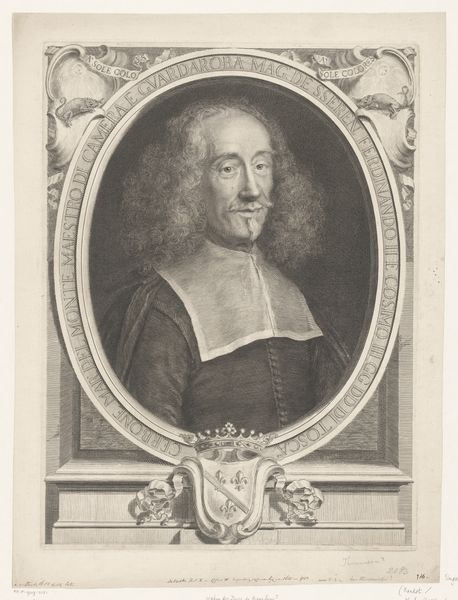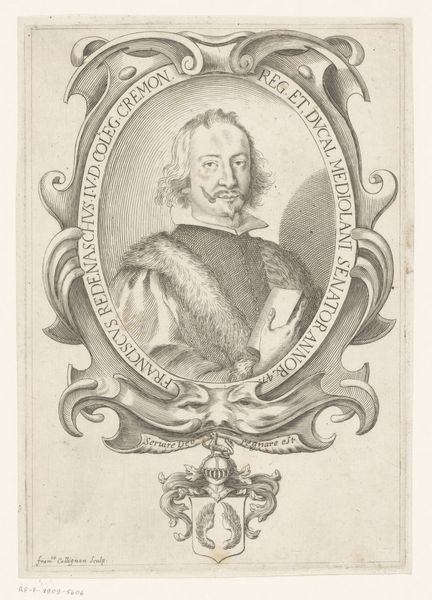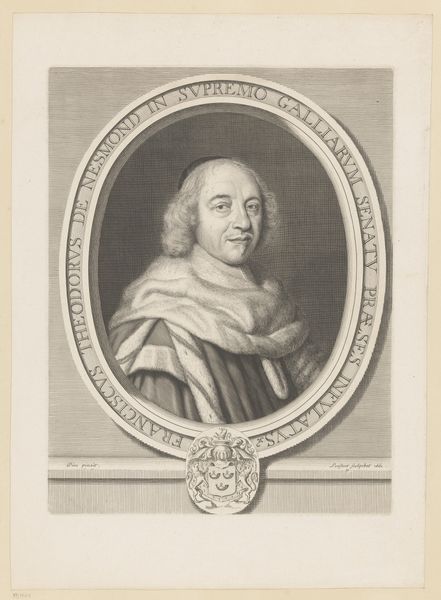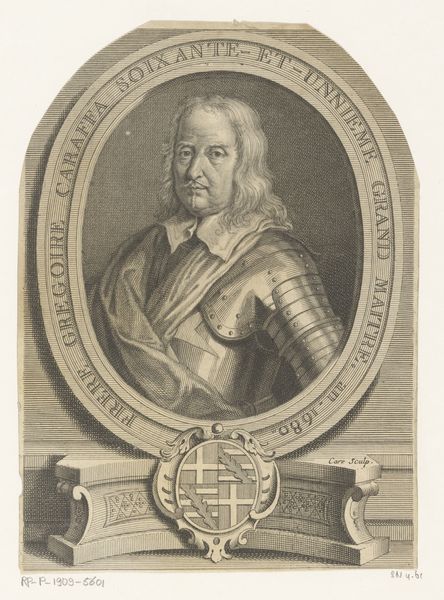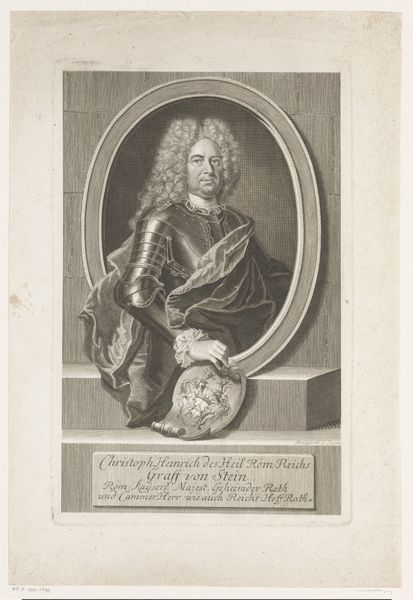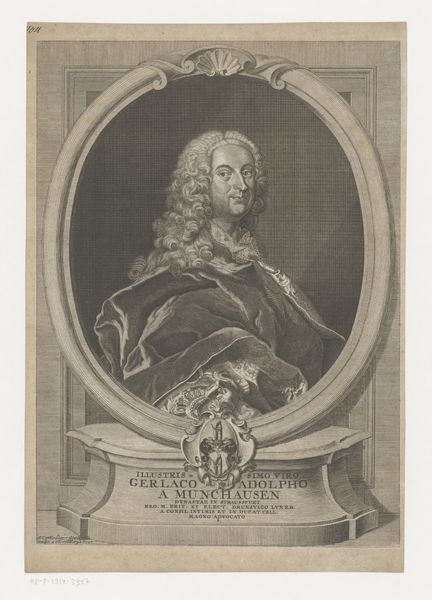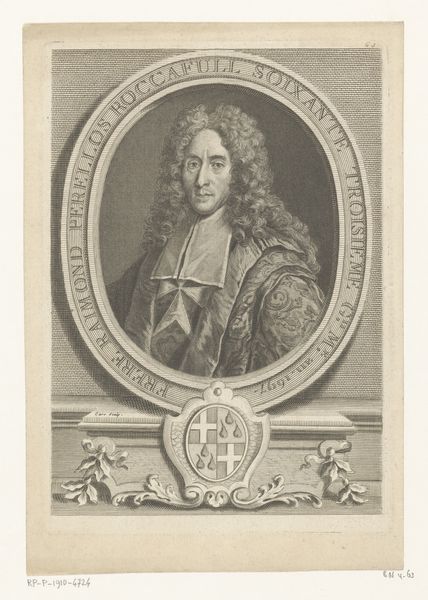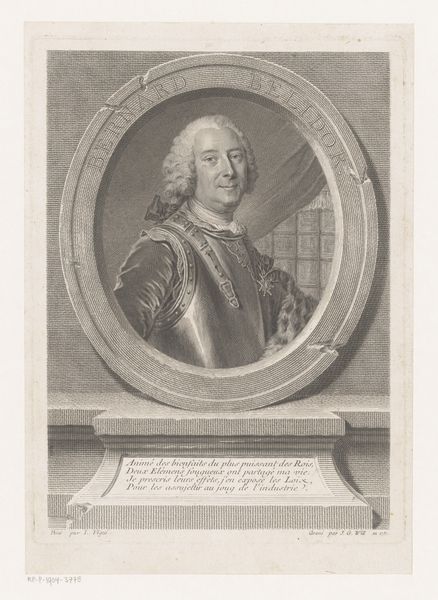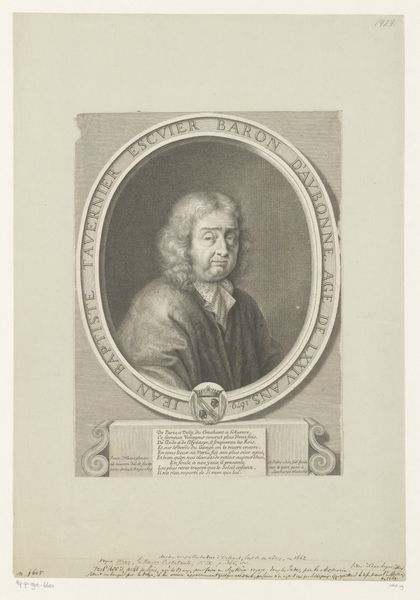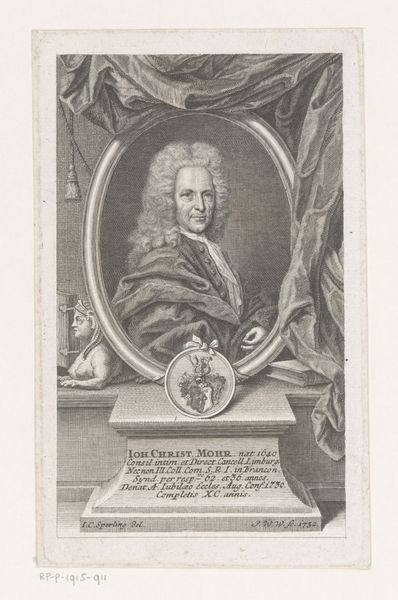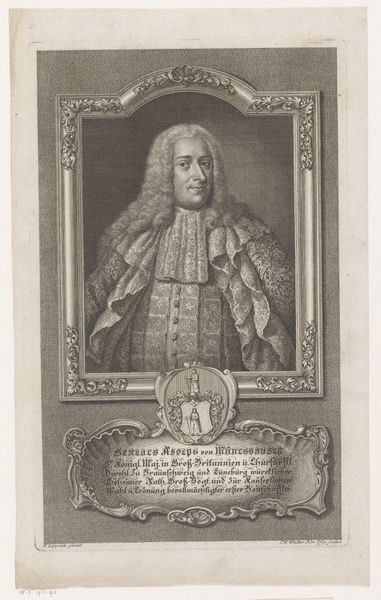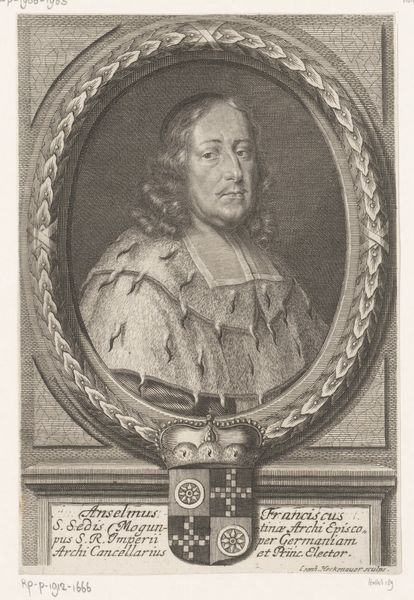
print, engraving
#
portrait
#
baroque
# print
#
old engraving style
#
caricature
#
historical photography
#
engraving
Dimensions: height 215 mm, width 154 mm
Copyright: Rijks Museum: Open Domain
Curator: This print, crafted by Laurent Cars in 1726, is titled "Portret van Annet de Clermont de Chattes-Gessant." It’s a compelling example of Baroque portraiture through engraving. Editor: It's striking. I’m immediately drawn to the texture – the intricate lines give it a rather serious, almost austere feel. What stands out to you from a historical perspective? Curator: Well, these types of portrait engravings served a vital public function. They were instruments in disseminating images of prominent figures and solidifying their status within society. Think of it as 18th-century social media, broadcasting identity. Editor: Right, the sitter's attire alone—the armor—speaks volumes about the social hierarchies. What does his specific ensemble signify in terms of power and influence? Curator: It connects Annet de Clermont to military and aristocratic traditions. It suggests he is someone of importance, potentially with military accomplishments or noble lineage; of course, not all aristocrats wore armour on the daily... Editor: Considering that portraiture of this era played a crucial role in shaping collective memory and reinforcing social norms, how does Cars' interpretation either uphold or subvert expectations? The details like the family crest at the bottom. Is that significant? Curator: Precisely. The family crest, embellished below the portrait, is crucial. It is a powerful statement about lineage and legitimacy. Cars is not necessarily subverting anything. Instead, his detailed execution reinforced societal expectations, providing visual validation to Clermont's position. These kinds of artworks and their commissioner are completely embedded within Baroque-era social structures. Editor: The piece becomes far richer when we realize these portraits weren't just records but active participants in shaping that era's political landscape, right? The construction of identity in art always intrigues me; each element feels loaded with meaning. Curator: Indeed, every detail carefully curated to convey power, status and lineage. It served as a political artifact as much as an artwork, intended for a wide audience far beyond the sitter. Editor: Seeing the work through the lens of its time provides a fascinatingly granular glimpse into the dynamics of class, authority, and the deliberate shaping of identity through art. Thank you! Curator: A valuable reflection that prompts us to think about the continuous presence of these influences within the fabric of the works of art themselves.
Comments
No comments
Be the first to comment and join the conversation on the ultimate creative platform.
